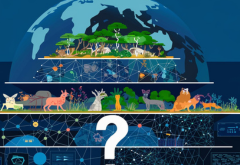Artificial intelligence (AI) offers immense potential, but it must be balanced against environmental concerns stemming from hardware, model training, and energy consumption. Gartner, Inc. underlines that Chief Information Officers (CIOs) can leverage their digital knowledge to drive their organizations’ sustainability initiatives when implementing AI projects.
In Gartner’s 2023 CEO survey, environmental issues entered the top 10 priority ranking for the first time. This aligns with increased pressure on CIOs from stakeholders like executives, customers, employees, investors, and regulators to enhance their IT for sustainability programs. Furthermore, 64% of CEOs believe that combining digitalization, such as AI adoption, with environmental sustainability represents a growth opportunity.
“CIOs should take that as a call to be more proactive in establishing their leadership through the execution of sustainability transformation strategies and use sustainability as a platform for growth,” notes Bettina Tratz-Ryan, VP Analyst at Gartner.
For most CIOs, meeting sustainability mandates requires tracking business Key Performance Indicators (KPIs), such as product carbon footprint or energy intensity. Tratz-Ryan emphasizes that CIOs should focus on applying their digital foundation to accommodate digitalization metrics while satisfying sustainability requirements.
This readiness should span cloud and storage, infrastructure, operations, digital threads, and the increasing adoption of AI.
Balancing AI Benefits with Environmental Concerns
Although 78% of CEOs believe that the benefits of AI outweigh the risks, the growing use of AI, including generative AI (GenAI), is contributing to a burgeoning environmental footprint. Gartner forecasts that AI could consume up to 3.5% of the world’s electricity by 2030.
Pieter den Hamer, VP Analyst at Gartner, points out, “AI consumes a lot of electricity and water. This negative impact should be mitigated.” Executives should consider AI’s environmental footprint and take mitigation measures, such as prioritizing cloud data centers powered by renewable energy.
Gartner suggests that public cloud providers can produce 70% to 90% fewer greenhouse gas emissions compared to traditional server rooms and owned data centers.
However, AI is not solely a challenge for environmental sustainability; it also holds significant potential to boost sustainability initiatives. Den Hamer states, “AI can be used to predict demand more accurately and reduce the usage of raw materials and energy in manufacturing.”
Ultimately, AI, when applied correctly and focused on the right use cases, can help companies mitigate sustainability risks, optimize costs, and drive growth. Business and IT leaders must initiate a portfolio of AI initiatives aligned with the sustainability and Environmental, Social, and Governance (ESG) goals of their organizations.
 Latest Technology News Today – Get Latest Information Technology Updates and Services Latest Technology News Today – Get Latest Information Technology Updates and Services
Latest Technology News Today – Get Latest Information Technology Updates and Services Latest Technology News Today – Get Latest Information Technology Updates and Services 









